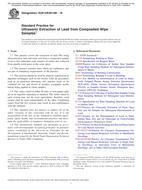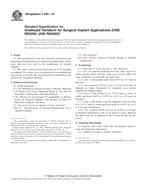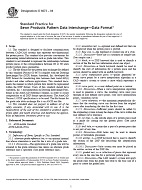1.1 What This Guide DoesThis guide helps designers, builders, home owners, and other stakeholders to identify and evaluate benefits and costs in order to make efficient choices between two or more traditional alternatives and between traditional alternatives and new-technology products, systems, materials, and designs. It directs the users to ASTM classifications, practices, adjuncts, and computer programs that implement the appropriate economic method to evaluate these benefits and costs in making technology choices. The focus, however, is on a nine-step process for using two ASTM practices-life-cycle costing (LCC), E 917, and the analytical hierarchy process (AHP), E 1765-to measure and evaluate the economic and overall performance of investments in single-family attached and detached dwellings. This guide contains three appendixes. The first two are designed to help users identify and evaluate benefits and costs. contains a classification of benefits and a methodology for estimating these benefits. contains a classification of costs and a methodology for estimating these costs. illustrates how to evaluate the economic performance of three alternative carpet materials, two traditional products and a new-technology product, when considering the guide for durability.
1.2 Purpose of This GuideThe purpose of this guide is to help users make cost-effective choices between traditional alternatives and new technologies permitted under performance standards. This guide (1) explains how the lack of economic information discourages the introduction of new technologies; (2) helps decision makers to identify and classify the key types of benefits and costs associated with both new technologies and traditional alternatives; (3) shows how to select alternatives that meet the performance standards, but cost less than traditional alternatives; and (4) shows how to incorporate nonfinancial information into the decision-making process, enabling performance to be defined and using costs and other criteria.
1.3 Relationship of This Guide to Other Performance Standards GuidesIn this guide, economic analysis is used to evaluate and compare the economic performance of traditional alternatives and new technologies permitted under performance standards for single-family attached and detached dwellings. Use this economic analysis guide in evaluating alternatives permitted under any of the other 15 performance attributes, either singly or in combination. The objective of economic analysis in this guide is to identify cost-effective choices among traditional alternatives and new technologies permitted under performance standards. The other 15 performance attributes define the scope of the economic analysis. That is, cost-effectiveness derives from better economic value while providing comparable or better technical performance for each attribute’s O-C-E-C performance statements. Consequently, to evaluate the economic performance of alternative residential designs, materials, products, components, subsystems, or systems permitted under performance standards, the user of this guide must first select one or more attributes, use the O-C-E-C framework to develop and present the corresponding performance statements, and identify the alternatives to be evaluated. , for example, evaluates carpeting with respect to the durability attribute and the economics attribute.
Product Details
- Published:
- 10/01/2004
- Number of Pages:
- 21
- File Size:
- 1 file , 210 KB
- Redline File Size:
- 2 files , 370 KB


